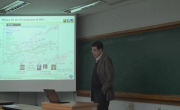Solar industry has received great attention due to its potential capability for satisfying the increasing energy needs. Efforts are being made to develop high power conversion efficient solar cells. High efficiency solar cells based on CdTe and CuInGa...
http://chineseinput.net/에서 pinyin(병음)방식으로 중국어를 변환할 수 있습니다.
변환된 중국어를 복사하여 사용하시면 됩니다.
- 中文 을 입력하시려면 zhongwen을 입력하시고 space를누르시면됩니다.
- 北京 을 입력하시려면 beijing을 입력하시고 space를 누르시면 됩니다.
https://www.riss.kr/link?id=A107491087
- 저자
- 발행기관
- 학술지명
- 권호사항
-
발행연도
2016
-
작성언어
-
- 주제어
-
등재정보
SCI,SCIE,SCOPUS
-
자료형태
학술저널
-
수록면
295-310(16쪽)
- 제공처
-
0
상세조회 -
0
다운로드
부가정보
다국어 초록 (Multilingual Abstract)
Solar industry has received great attention due to its potential capability for satisfying the increasing energy needs. Efforts are being made to develop high power conversion efficient solar cells. High efficiency solar cells based on CdTe and CuInGaS<SUB>2</SUB> (CIGS) quaternary chalcogenide compounds are costly and toxic. As a replacement for these costly and toxic compounds, earth abundant and nontoxic Cu<SUB>2</SUB>ZnSnS<SUB>4</SUB> (CZTS) compound was developed which showed promising application in solar cells. The commercialization of this compound is an issue as it is difficult to control the individual elemental composition and structure due to increased number of elements in the absorber compound. Hence, there is a great need to find the alternative material to address these issues. These compound semiconductors are replaced with environmental benign and low cost ternary Cu<SUB>2</SUB>SnS<SUB>3</SUB> (CTS) compound wherein the constituent elements such as copper, tin and sulfur are earth abundant and nontoxic. CTS is an emerging candidate for solar application because of its favorable band gap and higher optical absorption coefficient. Solar cells based on nanoparticle synthesized CTS have shown good power conversion efficiency (PCE 3.66%) due to size confinement effect. This review focuses on the recent developments in CTS nanoparticle synthesis by various chemical methods. A brief overview of these methods including its advantages along with its working mechanism is discussed. The effect of various experimental parameters of these chemical methods on CTS synthesis is elaborated. The structural, electrical and optical properties of CTS have been outlined and its potential applications have been presented. Finally, the challenges involved in the CTS synthesis and the scope for further development are discussed.
동일학술지(권/호) 다른 논문
-
- Elsevier Sequoia
- Lee, K.
- 2016
- SCI,SCIE,SCOPUS
-
- Elsevier Sequoia
- Kim, J.
- 2016
- SCI,SCIE,SCOPUS
-
Preparation, characterization and high quantum efficiency of yellow-emitting CsVO3 nanofibers
- Elsevier Sequoia
- Qiao, X.
- 2016
- SCI,SCIE,SCOPUS







 ScienceON
ScienceON






